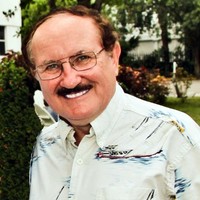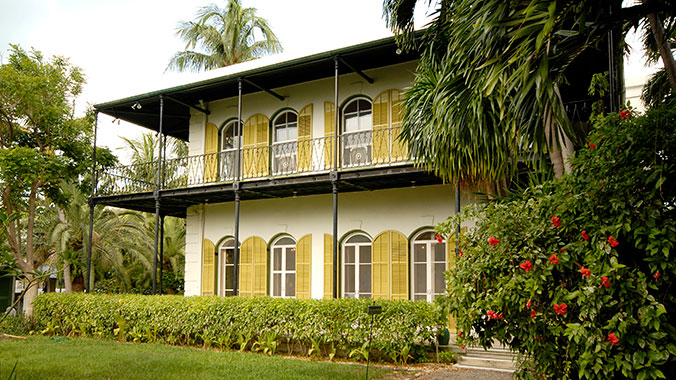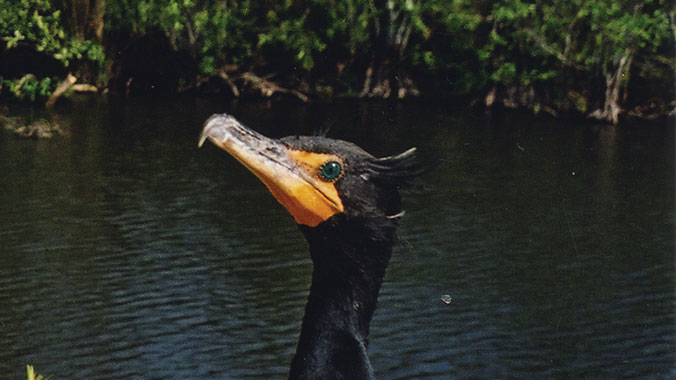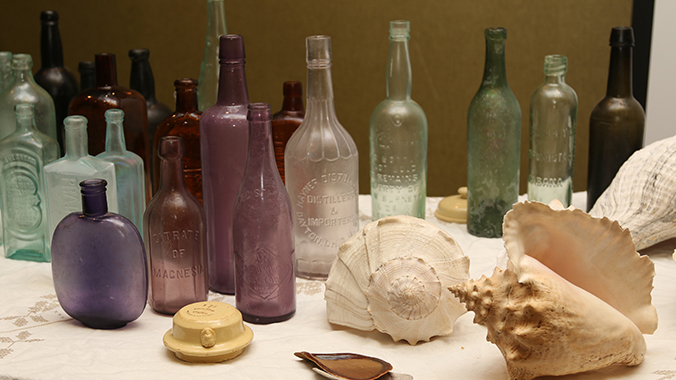Hemingway's Key West
by Stuart McIver
This vivid portrait reveals both Hemingway, the writer, and Hemingway, the hard-drinking, woman-chasing fighter and sportsman of legend. Hemingway's decade in Key West during the 1930s was his most productive. His only book set in the U.S., To Have and Have Not, takes place there. Meet his circle of friends (known as "the Mob"), his second wife, Pauline, and their two children. Hear from Hemingway contemporaries and scholars about the man and the town that he made famous.
Key West: History of an Island of Dreams
by Maureen Ogle
Parrotheads, Hemingway aficionados, and sun worshipers view Key West as a tropical paradise, and scores of writers have set tales of mystery and romance on the island. The city’s real story—told by Maureen Ogle in this lively and engaging illustrated account—is as fabulous as fiction. In the two centuries since the city’s pioneer founders battled Indians, pirates, and deadly disease, Key West has stood at the crossroads of American history. In 1861, Union troops seized control of strategically located Key West. In the early 1890s, Key West Cubans helped José Martí launch the Cuban revolution, and a few years later the battleship Maine steamed out of Key West harbor on its last, tragic voyage. At the turn of the century, a technological marvel—the overseas railroad—was built to connect mainland Florida to Key West, and in the 1920s and 1930s, painters, rumrunners, and writers (including Ernest Hemingway and Robert Frost) discovered Key West. During World War II, the federal government and the military war machine permanently altered the island’s landscape, and in the second half of the 20th century, bohemians, hippies, gays, and jet-setters began writing a new chapter in Key West’s social history.
Last Train to Paradise: Henry Flagler and the Spectacular Rise and Fall of the Railroad that Crossed an Ocean
by Les Standiford
Last Train to Paradise is acclaimed novelist Les Standiford’s fast-paced and gripping true account of the extraordinary construction and spectacular demise of the Key West Railroad—one of the greatest engineering feats ever undertaken, destroyed in one fell swoop by the Labor Day hurricane of 1935.
Notebooks
by Tennessee Williams & Margaret Thornton
Tennessee Williams’s Notebooks, here published for the first time, presents by turns a passionate, whimsical, movingly lyrical, self-reflective, and completely uninhibited record of the life of this monumental American genius from 1936 to 1981, the year of his death. In these pages Williams (1911-1981) wrote out his most private thoughts as well as sketches of plays, poems, and accounts of his social, professional, and sexual encounters. The notebooks are the repository of Williams’s fears, obsessions, passions, and contradictions, and they form possibly the most spontaneous self-portrait by any writer in American history.
To Have and Have Not
by Ernest Hemingway
This is the dramatic, brutal story of Harry Morgan and his efforts to support his family by running contraband between Key West and Cuba. Set in the 1930s, the book carries all the flavor of an era that was poor, tough and resourceful. Harshly realistic, yet with one of the most subtle and moving relationships in Hemingway's "oeuvre", it goes beyond high adventure. It was adapted for film and became a memorable classic, starring Humphrey Bogart and Lauren Bacall.
Tom: The Unknown Tennessee Williams
by Lyle Leverich
The riveting, revelatory, and sole authorized account of the critical first decades of Tennessee Williams's life. Tennessee Williams, author of such indelible masterpieces as The Glass Menagerie and A Streetcar Named Desire, is considered by many to be the greatest literary artist of the American theater. Tom is Lyle Leverich's definitive account based on his exclusive access to letters, diaries, unpublished manuscripts, and family documents of Williams's early life and of the events that shaped this most autobiographical of dramatists. It tells the story of the marital traumas of his bullying father and overly protective mother, the mental disorders that institutionalized his beloved sister Rose, his stalled academic career, and his confused sexuality and early successes as a writer; and it leaves Thomas Lanier Williams on the brink of fame with The Glass Menagerie and his transformation into the celebrated persona of "Tennessee."



















